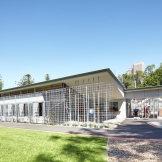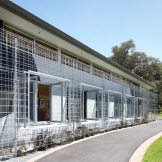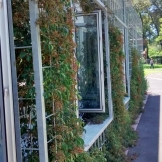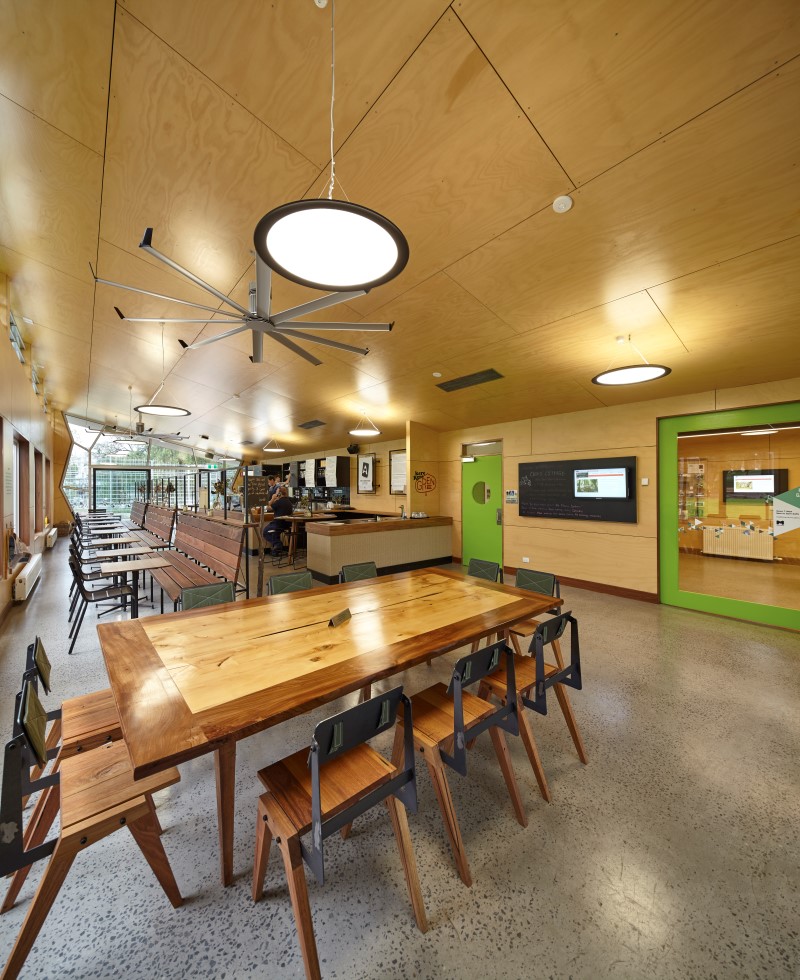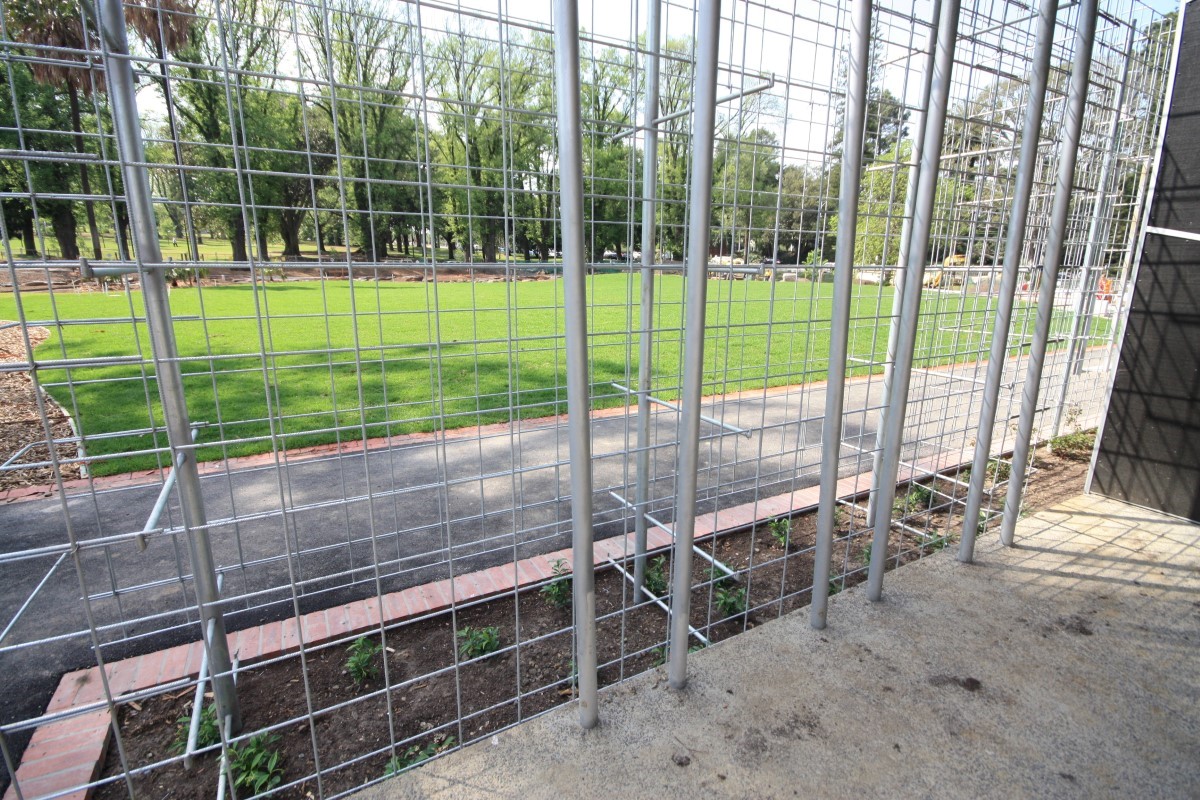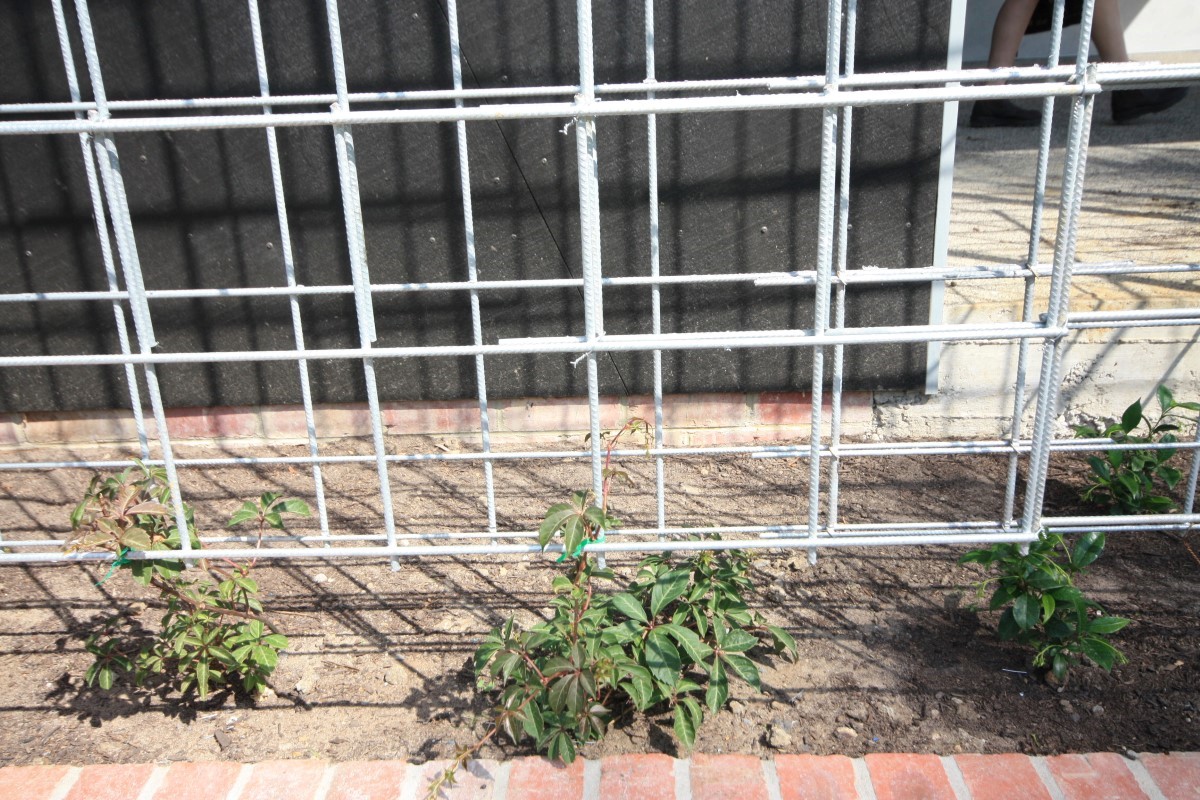Green facade at Fitzroy Gardens visitor centre
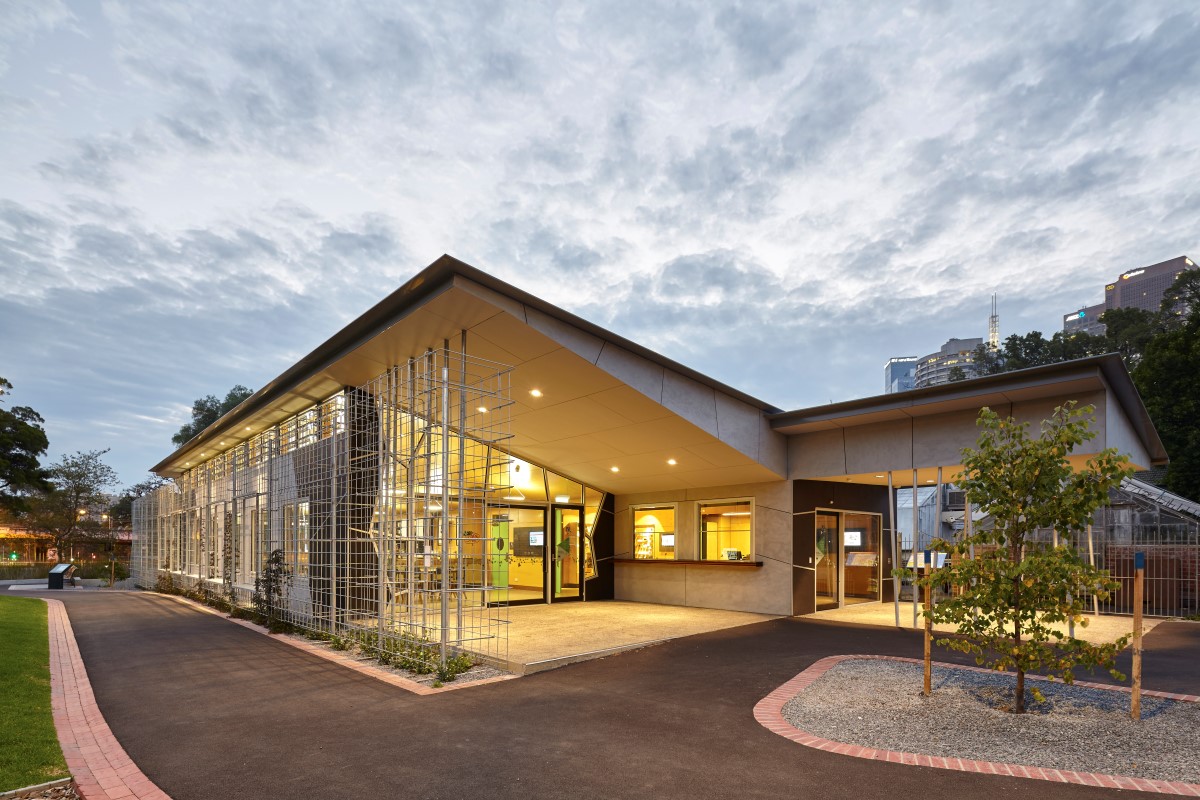
This green facade made of climbing plants helps to cool the building and blend it into the heritage garden surrounds.
A redevelopment project in Fitzroy Gardens in 2013 and 2014 included the installation of an underground stormwater harvesting system, a new visitor interpretation centre, café and a garden area.
As part of the design, we installed a green façade on the visitor centre. This helped it to blend in with its heritage surrounds. It also helped to demonstrate that, through design and function, all buildings could reduce their impact on the environment.
The green facade comprises a selection of climbers, interspersed with window openings. These function as a shading device for the building’s eastern façade and the southern deck.
Combined with misting sprays set within the wall, this will pre-cool the outside air before it is drawn into the building through the window and doors.
The green façade is structured on an open steel mesh frame. A variety of deciduous and evergreen creepers grow on this frame. The deciduous plantings allow sunlight into the building during winter months.
What benefits has the green facade provided?
When the plants are fully-grown and cover the façade, outcomes will include:
- Reduced energy expenditure and carbon emissions at the visitor centre.
- A public demonstration of best practice green façade design.
- A visual shield.
- Improved microclimate.
- Visitor Centre
- Cooks Cottage



